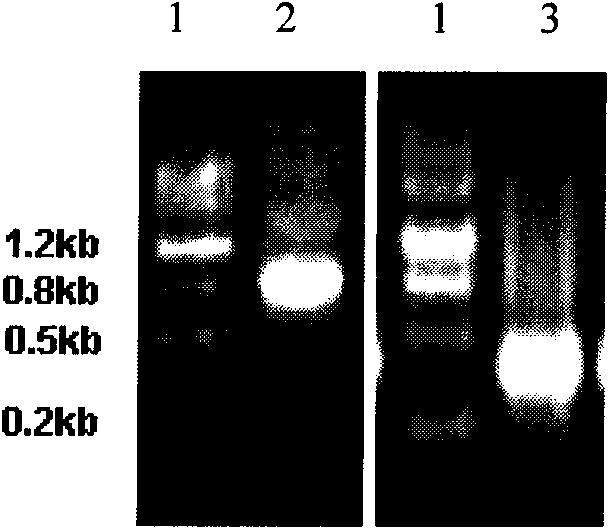Plant stress resistance related protein GmSIK1, coding gene thereof and application thereof
A technology of plant stress tolerance and encoding genes, which is applied to soybean stress tolerance-related protein GmSIK1 and its encoding genes and applications, and can solve the problems of lack of data and late understanding of plant receptor kinases
- Summary
- Abstract
- Description
- Claims
- Application Information
AI Technical Summary
Problems solved by technology
Method used
Image
Examples
Embodiment 1
[0077]Example 1, Screening of Soybean Stress Tolerance-Related Receptor Kinase Gene GmSIK1 and Cloning of Its cDNA
[0078] 1. Screening of GmSIK1
[0079] The completion of soybean genome sequencing provides favorable conditions for the discovery of new stress-resistant genes. According to the 30,000 EST sequences determined by the inventors and the more than 280,000 sequences downloaded from GenBank, EST clustering was performed together to obtain 56,147 single genes (unigenes), including 32,278 contigs (Contigs) and 23,869 single-copy sequences ( singleton). On the basis of the existing single gene (unigenes) annotation of Arabidopsis, the function of soybean single gene (unigenes) was classified and annotated. According to the alignment of known soybean receptor kinase sequences with soybean unigenes, 486 soybean receptor kinase candidate genes were obtained. 338 gene fragments with relatively complete sequences were selected to design RT-PCR primers, and their response...
Embodiment 2
[0103] Example 2, the expression characteristics of GmSIK1 in different tissues and organs
[0104] RNA was extracted from the roots, stems, and leaves of two-week-old soybean Nannong 1138-2 seedlings, and the field soybean Nannong 1138-2 flowers and pods, and the expression level of GmSIK1 was analyzed by RT-PCR. The tubulin gene was used as a control, and the primers were: 5'-AAC CTC CTC CTC ATC GTA CT-3' (SEQ ID NO: 9) and 5'-GAC AGC ATC AGC CATGTT CA-3' (SEQ ID NO: 10).
[0105] The expression characteristics of GmSIK1 gene in different tissues and organs are shown in image 3 . Among them, 1: root; 2: stem; 3: flower; 4: leaf; 5: pod.
[0106] The results showed that the expression of GmSIK1 was strong in leaves and weak in other tissues and organs.
Embodiment 3
[0107] Example 3, Expression Characteristics of Soybean GmSIK1 Gene under Different Adversity Stresses
[0108] Sow soybean Nannong 1138-2[Glycine max(L.)Merr] in flower pots filled with vermiculite, grow for 2 weeks (grow 5-6 true leaves), and then take the seedlings to undergo the following stress treatments:
[0109] 1) Abscisic acid (ABA) treatment: the roots were completely immersed in 100 μM ABA solution; 2) Salicylic acid (SA) treatment: the leaves of the seedlings were sprayed with 2 mM salicylic acid; 3) Drought stress treatment: the soybean seedlings were placed at room temperature Drought in the air; 4) Low temperature (4°C) stress treatment: completely immerse the roots in the aqueous solution, which is kept at 4°C; 5) Salt stress treatment: completely immerse the roots in the 200mM NaCl solution. 6) Control: The roots were completely immersed in the aqueous solution, and the aqueous solution was kept at room temperature.
[0110] After the above-mentioned treatme...
PUM
 Login to View More
Login to View More Abstract
Description
Claims
Application Information
 Login to View More
Login to View More - R&D
- Intellectual Property
- Life Sciences
- Materials
- Tech Scout
- Unparalleled Data Quality
- Higher Quality Content
- 60% Fewer Hallucinations
Browse by: Latest US Patents, China's latest patents, Technical Efficacy Thesaurus, Application Domain, Technology Topic, Popular Technical Reports.
© 2025 PatSnap. All rights reserved.Legal|Privacy policy|Modern Slavery Act Transparency Statement|Sitemap|About US| Contact US: help@patsnap.com



